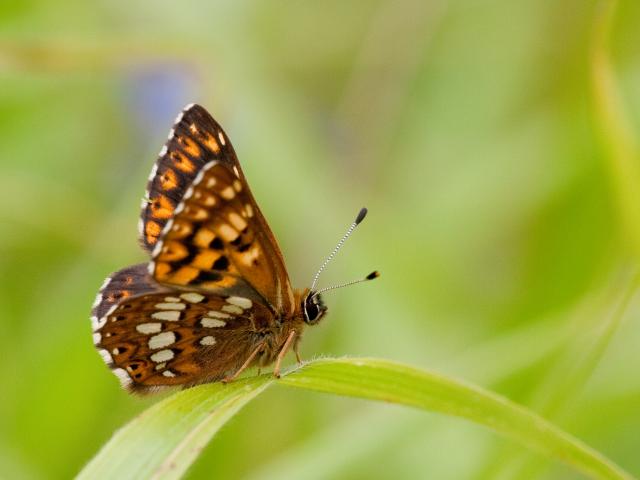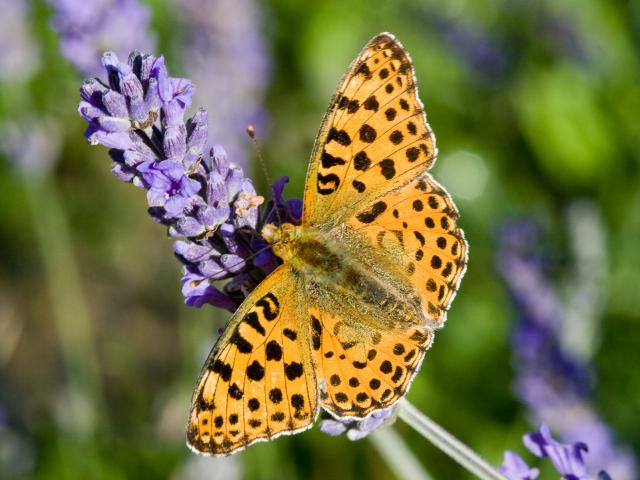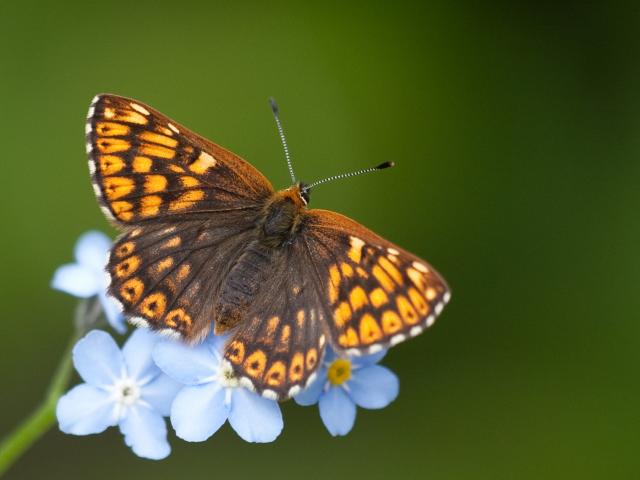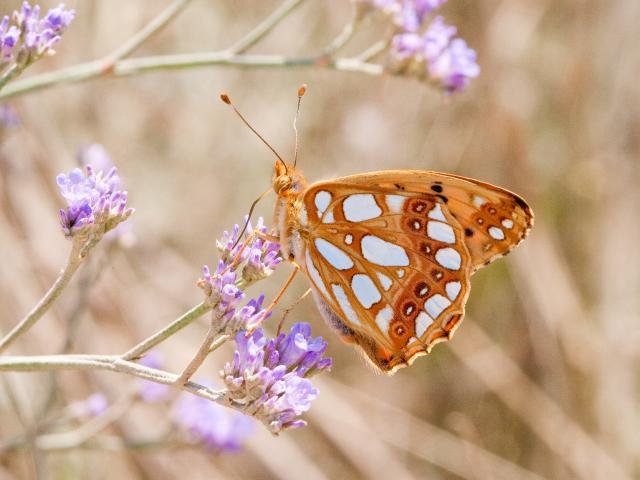
Of all our butterfly names the most mysterious are the two royal ones: The Queen of Spain Fritillary and the Duke of Burgundy.
Both names appeared for the first time in the second half of the eighteenth century, and both in the works of the artist and illustrator Moses Harris. Unfortunately Harris did not explain these names – and neither did anyone else! All the same they have been the accepted names for these two beautiful butterflies ever since.
Is it possible to glimpse what was in the minds of the person or people that gifted them these names – the only royal ones among our butterflies, unless you count the Imperial Purple Emperor and the Republican-American Monarch? I think so, but perhaps first we should briefly run through some other possibilities.
First: the localities. Burgundy is or was a medieval dukedom whose territory lay in eastern France (where Burgundy wine comes from) and also in what is now Belgium and northern France. But the first Duke of Burgundy butterflies were all caught in England, and the butterfly was not known on the continent until later. Hence it cannot have anything to do with Burgundy as a place.
Similarly the Queen of Spain was first known from the Baltic States, and was formerly known as the Riga Fritillary. That is about as far away from Spain as you can get in Europe!
Secondly, I think we can dismiss any direct connection with European royals. The ancient Dukedom of Burgundy became a title of the French crown in the fifteenth century and by the time butterflies were being named it no longer existed as a separate entity. Maitland Emmet, the doyen of butterfly names, suggested that the name might have come by way of sponsorship. For the first, very expensive, butterfly books, individual plates were often dedicated to noblemen and women, or other notable individuals, in return for their patronage. But no such plate exists for the Duke of Burgundy, and, since by then there was no such person, that link seems unlikely.

Nor do the two butterfly’s Latin names provide much of a clue. Both were originally named by Linnaeus in 1758. He named the Queen of Spain Fritillary lathonia. That might have been one of the mythical nymphs, names which graced several of our fritillaries, but I think it might also be a reference to Lithonia, the part of Europe where it was first found (Linnaeus and his disciples weren’t above puns and jokes!). As for the Duke’s name, Lucina was the goddess who brought light, perhaps a vague reference to the hand-mirror-like markings on its underside. No clues there either!
So it seems the names have nothing to do with localities nor specific persons nor their Linnaean species names. I think the clue lies elsewhere. Our butterflies and moths were named by people who were often artists and enjoyed painting insects in watercolour. What would have attracted them to these particular butterflies so much that they elevated them to royalty? Colour! In the case of the Queen it was probably those big coin-like silver spots on the underside which had given the butterfly its alternate name, the silver-spotted fritillary. In the case of the Duke it might have been the colour or pattern, which in fresh specimens is a brilliant mixture of golden and reddish-browns. In the books of my boyhood it was still called the Duke of Burgundy Fritillary, a reference to that chequered pattern.

But why the Queen of Spain? At the time when the butterfly acquired its name there were two possible candidates for this title, Maria Amalia of Saxony, wife of King Charles III, who died in 1760, or Maria Luisa of Parma, wife of King Charles IV, who succeeded to the Spanish throne in 1788. Contemporary portraits of both queens show them in richly embroidered silvery dresses. The famous group painting of the royal family by Goya depicts Maria Luisa in such a dress but also with a bodice studded with silver spots, probably pearls. Although by then the Spanish monarchy was in decline, they had been the richest kings and queens in Europe, and were still associated with extraordinary wealth – which they flaunted in their costumes and clothes. Hence the silveriest of the fritillaries – the wealthiest, as it were - became the Queen of Spain.
The Duke is harder to explain, but there may be a clue. In his The Aurelian of 1766, in which the name appears for the first time, Moses Harris calls it the ‘Duke of Burgundy, Frittillaria, commonly called The Burgundy'. Does that not suggest that the reference was the burgundy colour, one well-known to artists like him and made up of red, blue and black pigments?

The ‘Duke’ might have been added to make a better name, for everyone had heard of the famous Dukes of Burgundy (even though they had all been dead for 300 years). Today the colour burgundy is a deep purple, wine-like colour, but back then, before the advent of artificial dyes, artist’s palettes were broader and burgundy might well have encompassed browner tints such as auburn (red-brown) or titian (brownish-orange). Anyway that is my best guess!
Whatever their meaning I think we can agree that these are names worthy of two very beautiful butterflies, as close to living jewels as the natural world can provide.

© Copyright: Peter Marren
Filmmaker Stephen Lowenstein recently worked with Dr Richard Fox of Butterfly Conservation on a short drama about a boy’s dream of seeing a Queen of Spain butterfly in pre- World War One England. If you would like to watch* this film please go here.
*Please note there is a charge of £1 to access the film with profits going to Butterfly Conservation. Also please note that the film (although fictitious) reflects collection practices which were current over a hundred years ago – these are not used today.

